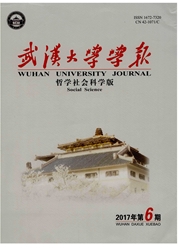

 中文摘要:
中文摘要:
FDI与ODI可以通过资本流动产生的规模效应、技术效应和结构效应影响碳排放水平,"一带一路"战略下建设绿色丝绸之路、打造亚洲低碳共同体成为沿线国家共识,因此,研究我国沿线省份FDI与ODI对低碳经济发展的影响,对于"一带一路"政策的实施具有重要的理论和现实意义。研究表明FDI整体是不利于低碳经济发展的,尤其是表现在规模效应和结构效应上;而ODI虽然促进了低碳经济发展但并未带来明显逆向技术溢出效应。为此,在"一带一路"政策实施过程中,"一带"地区要积极引导FDI流向低碳企业,同时注意防范FDI对本地企业的挤出效应,"一路"地区则要充分发挥FDI的技术溢出效应;此外,应加大技术寻求型ODI的比例,推进低碳经济目标的实现。
 英文摘要:
英文摘要:
"Low-carbon economy" development model has become the inevitable choice of many countries. Low carbon economy cannot develop without the financial support and the flow of capital will significantly affect the low carbon economy development. Foreign Direct Investment (FDI) and Outward Foreign Direct Investment (ODD promote economic growth and at the same time, they bring the resource consumption and environmental pollution. Therefore, in the context of promoting economic growth and low carbon development, we should pay attention to the environmental impact caused by FDI and ODI. Under the background of "the Belt and Road Initiatives"(B~R), it has been a common sense that alliance countries should build green silk road and set up low carbon community. So, iCs important for the B&R strategy to analyze FDI and ODI effects on low carbon economic development in the region in both theory and reality. FDI and ODI will influence the level of carbon emission significantly through scale effect, structure effect and technical effect. Scale effect is the development of economy and the change of the economic scale due to the flow of international capital, which results in the change of carbon emissions. Structure effect is the channel that FDI and ODI can guide the direction of capital to the high and new technology industry, as well as low carbon industry, thus the high carbon industry will die out. This evolution can realize the transformation and upgrading of industrial structure and finally achieve the goal of low carbon economy. Technical effect refers to the channel that the international capital flow will bring advanced production technology. Through the technical spillover effect or reverse technology, it can promote the country's low carbon economy development. This paper selected panel data of 17 provinces along the B&R between 2003- 2014 and constructed FDI and ODI carbon emission simultaneous equation model based on B&R panel date regression of related provinces, according to environment
 同期刊论文项目
同期刊论文项目
 同项目期刊论文
同项目期刊论文
 期刊信息
期刊信息
